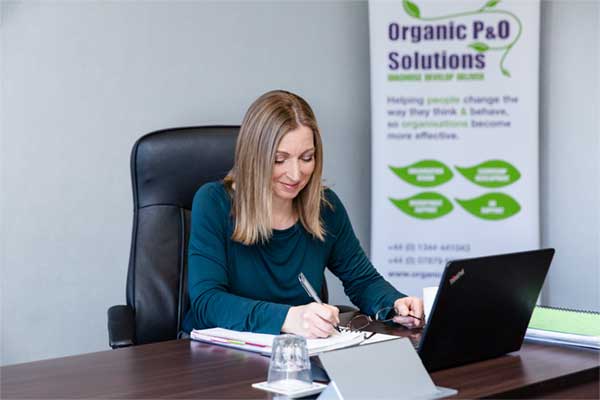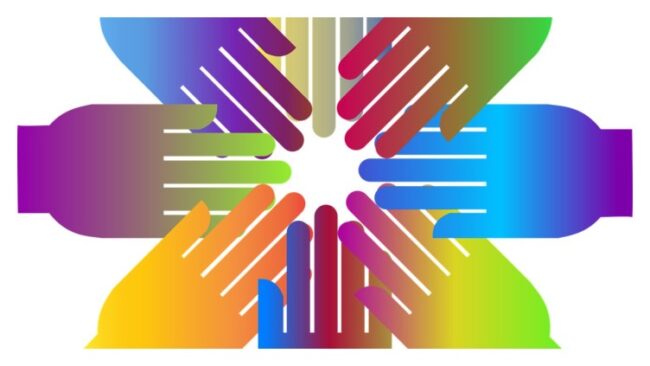How are you at dealing with challenges that take you outside your comfort zone and require you to go beyond your usual points of reference?
When you have to do something new, something you’re not familiar with or don’t understand, it’s natural your ‘fight or flight response will kick in, causing you to feel nervous, anxious – perhaps even frightened.
In the workplace, where organisations must continually respond to threats and opportunities, and the people working in them have to adapt and evolve, change is a constant. Constant change creates uncertainty, and that creates stress.
Understanding how you behave in stressful situations, the reactions that are triggered and how you can manage them is crucial. It’s why each year, our client Berkeley Construction takes their new apprentices out of the workplace and into the great outdoors for a week of team-building and personal development exercises. Working with our client, we use behavioural observations made during these activities to inform the learning and development programmes we deliver to their apprentices.
In February, I joined a group of first-year apprentices in the Lake District, undertaking a wide range of adventure experiences, including mountain climbing, abseiling and kayaking. I was there primarily to observe, but as an active participant as well, the five days I spent in Eskdale provided me with insights into how I personally respond when mentally and physically tested. By coincidence, this was something I had a further opportunity to reflect on just a few weeks ago, when I went on a ski holiday with friends from my BNI networking group.
The first time I went skiing, it reminded me how we all learn in different ways and inspired me to draft my blog, 4 Insights That Will Boost Your Learning Power. This time – only the second time I’ve skied – my experiences gave me an opportunity to reflect on how I deal with stressful situations.
My mountain adventures in the Lake District and the Alps both helped to reinforce some important lessons about the process of learning to overcome fear of failure and embrace new challenges:
- Stress testing is best done in a safe space
We all respond differently to stress. Understanding where you go mentally and physically when dealing with a stressful situation will help you recognise warning signs and put coping mechanisms in place, ensuring you stay in full control.
Learning these things about yourself is best done in a safe, non-work environment. Finding settings outside of work where you can safely activate stress triggers, see how you respond, and practice managing responses will help you develop skills you can transfer to work situations.
Scrambling up cliffs and throwing oneself down icy mountains might be extreme examples, but under skilled supervision, they certainly helped teach me a lot about my own instinctive responses.
My ski experience also gave me a real insight into why, in new environments, we might not always comply with logical instructions. Many of the critical actions that keep you upright while skiing – like leaning forward when going downhill and out when making a turn, are counter-intuitive. I knew these things because I had a great instructor, but despite knowing what I had to do, there were times early on when fear took over and made me doubt what I’d learnt – with inevitable results!
- Developing muscle memory takes time
It was interesting to see the different approaches to skiing in our mixed ability group. While I worried I hadn’t put enough time and effort into preparing myself properly, the more advanced skiers never questioned their fitness levels or capabilities. It took me a while to overcome this feeling and to recognise I wasn’t asking anything of my body that it wasn’t’ already capable of doing.
I noticed too that while I was comfortable putting lessons learnt into practice on wide, gentle slopes, as soon as the environment changed to narrower, steeper gradients with more significant drops to the side, all my training was – initially at least, forgotten. In my head, the consequences of crashing overrode all I’d been taught. Instead, I automatically reverted to the brace position, incapable of implementing the techniques I knew would get me down the mountain safely.
What became clear was that learning was a process. I needed to constantly remind myself that I did know how to deal with the new environment I was in, that I did have the skills but not, as yet, the experience that only comes with practice.
After my lessons were over for the day, I’d practice the techniques I’d learnt on safer, less steep slopes. They quickly became second nature as learning transitioned into embedded muscle memory – in my head as much as my legs – and I felt able to trust my instincts in more testing environments.
- Trusting those with experience & knowledge is vital
Both experiences reinforced the importance of trusting those who are teaching a skill we want to learn. Of course, this is especially true when there is a physical risk to our person, but it applies equally in a business environment.
On one of my ski lessons, the weather suddenly closed in around us at the top of a run, and visibility became very poor. Normally, I’m pretty unflappable but without visual cues. I found myself starting to panic.
What got me to the bottom of the slope in one piece was the level of trust I’d developed with my instructor. I knew she was an expert in the skill I still had to master and that having taught me for several days, she had the measure of my capabilities, limits, character and personality and wouldn’t ask me to undertake something I wasn’t capable of doing.
By being consistent, supportive, and direct during the week about what I needed to do to improve my skiing, she’d earned my trust. As a result, I was completely comfortable following the instructions she gave me as she helped me negotiate my way to the bottom of the slope – which it transpired as the weather cleared, was significantly less steep than I’d imagined!
If she hadn’t managed my crisis of confidence sensitively and had instead simply barked instructions at me, my belief in my ability would almost certainly have been seriously damaged.
My mountain top wobble also demonstrated how nervousness and uncertainty can transfer to those going through a learning process together: how a person leading a team through a new challenge may need to manage fall-out in those around someone struggling with a task – as well as managing the individual themselves.
One of our group, who up to that point had been making good progress and was very confident, lost their nerve when they saw me panic, with the result that the instructor had to talk us both down.
The activity leaders on our Outward Bound adventure were similarly perceptive and professional in their approach, ensuring that if someone was nervous about participating in an activity, the feelings of the whole group were considered.
How often, in a work situation, do we miss subtle signals in communication because we’re so focused on getting someone to complete a task?
- A supportive, sharing environment aids learning
In the Lake District and in the mountains too, I found being part of a supportive team of people all striving to overcome the same challenges and achieve shared goals helped me with the learning process.
The Outward Bound programme allowed for regular periods of review and reflection, enabling us to consolidate learning points and helping to foster a cycle of continuous improvement. And on my ski trip, although our group consisted of a wide range of abilities and we went our own ways on the slopes, we came together in our chalet at the end of each day to exchange stories, discuss experiences, celebrate success, talk through fails, and provide moral and technical support.
For me, this part of the day was an especially important component of the learning process. In the workplace, the power of providing a space where colleagues going through a learning programme together can engage in useful dialogue, share and compare experiences and generally support one another can often be overlooked.
If you have to face a new challenge or go through a difficult transition at work, you might not be aware of feelings of fear or resistance. Because you’re not physically at risk, they may be relegated to your subconscious.
We need to remember that one person’s fear may be very different to someone else’s. Fear of failure or not being good enough can come from many places, and an employer or line manager can’t be expected to know or understand everything about the feelings of those people for whom they have responsibility.
Perhaps the most important thing we can do is to recognise that we’re all on our own journey. If you or a colleague are struggling with a challenge, could a different environment bring a better understanding of your automatic responses and help uncover solutions to help deal with them?
In the mountains, the guidance and support of experts gave us the confidence to put learning into practice in safety. It enabled us to test new skills, reflect on results and push boundaries without fear, and return to our workplaces with a much better understanding of ourselves.
Can Organic P&O Solutions Help You with Bespoke Learning & Development?
Dealing with demanding challenges in an ever-changing environment means your employees and line managers are under constant pressure to take decisive – often difficult actions. The success of your organisation depends on their ability to perform under pressure.
Organic P&O Solutions’ strategic and operational Learning and Development programmes are designed to equip you and your team with the skills needed to deal with all eventualities. We can create customised topical training programmes to address your requirements – and with the lifting of Covid regulations, we’re now able to deliver them face to face again.
Call us today to find out more about our Learning and Development programmes and how they can help you!










